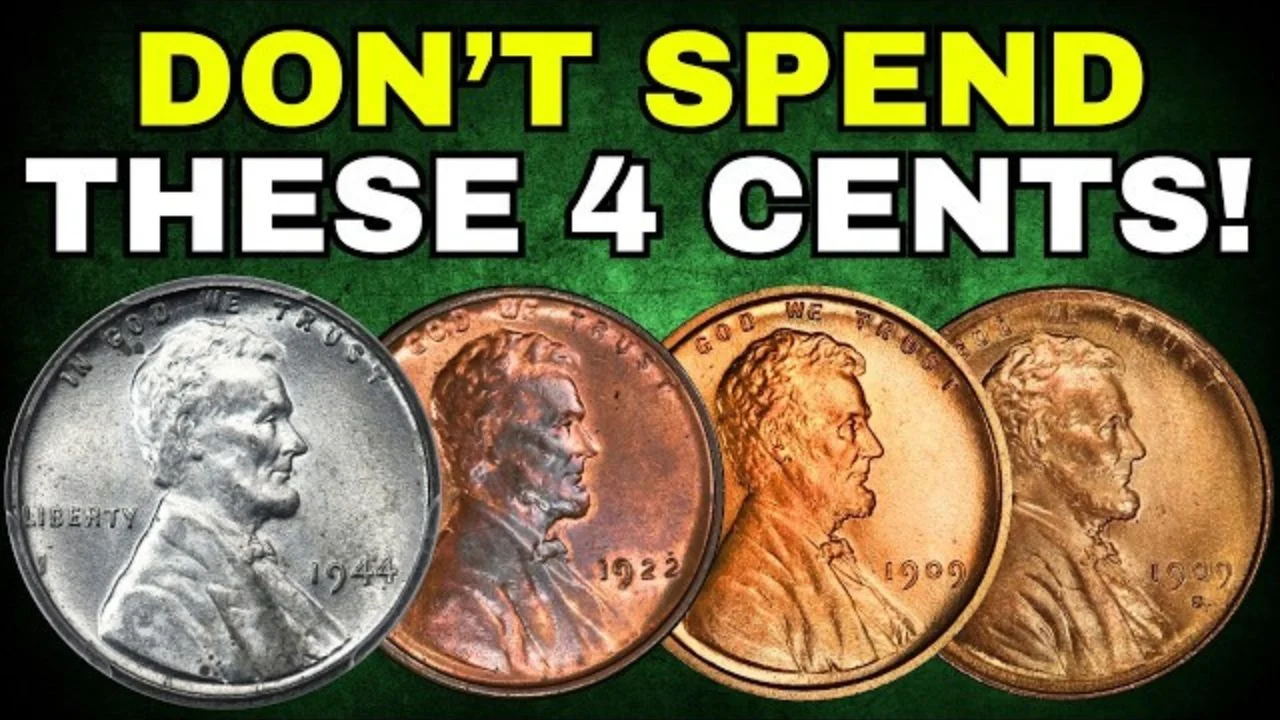Have you ever found a penny in your pocket and wondered about its story? The Lincoln Wheat Penny, with its iconic design and rich history, is more than just spare change—it’s a piece of American heritage that’s captivated coin collectors for over a century. Whether you’re a seasoned numismatist or just curious about coin collecting, this guide will take you through the fascinating world of the Lincoln Wheat Penny, from its origins to its value today. Let’s dive in!
What Is the Lincoln Wheat Penny?
The Lincoln Wheat Penny, often called the “Wheat Penny,” is a one-cent coin produced by the U.S. Mint from 1909 to 1958. Featuring President Abraham Lincoln on the obverse and two wheat stalks on the reverse, it’s one of the most recognizable coins in American history. Designed by Victor David Brenner, this penny was the first U.S. coin to feature a president’s portrait, setting a precedent for modern coinage.
The History of the Lincoln Wheat Penny
Introduced in 1909 to commemorate the 100th anniversary of Abraham Lincoln’s birth, the Wheat Penny was a groundbreaking addition to U.S. currency. The coin’s debut marked a shift from symbolic designs, like Lady Liberty, to real historical figures. Brenner’s design was chosen for its simplicity and elegance, with Lincoln’s profile on the front and wheat stalks symbolizing prosperity on the back.
The coin wasn’t without controversy. Early versions included Brenner’s initials (V.D.B.) on the reverse, but public outcry over their prominence led to their removal in later 1909 issues, making those early coins highly sought-after today. Over its 49-year run, the Wheat Penny saw changes in composition, especially during World War II when copper shortages led to zinc-coated steel pennies in 1943.
| Year | Key Historical Event | Impact on Lincoln Wheat Penny |
|---|---|---|
| 1909 | Coin introduced | First U.S. coin with a president’s portrait |
| 1909 | V.D.B. controversy | Initials removed from reverse |
| 1943 | WWII copper shortage | Steel pennies minted |
Why the Lincoln Wheat Penny Matters Today
For coin collectors, the Lincoln Wheat Penny is a treasure trove of history and value. Its long production run and variations make it a favorite for hobbyists. Rare editions, like the 1909-S V.D.B. or the 1955 Double Die, can fetch thousands of dollars at auction. Beyond monetary value, these pennies connect collectors to America’s past, from the Great Depression to World War II.
Even common Wheat Pennies hold sentimental value. Many collectors start with these coins because they’re affordable and widely available, making them a gateway into the world of numismatics.
How to Start Collecting Lincoln Wheat Pennies
Ready to start your own collection? Here’s how to dive into collecting Lincoln Wheat Pennies:
- Check Your Change: Wheat Pennies still occasionally turn up in circulation. Look for dates between 1909 and 1958.
- Visit Coin Shops or Shows: Local dealers and coin shows are great places to find Wheat Pennies in various conditions.
- Join Online Communities: Platforms like Reddit or coin collecting forums offer tips and trading opportunities.
- Invest in a Guidebook: Books like A Guide Book of Lincoln Cents provide detailed information on varieties and values.
- Store Properly: Use coin albums or holders to protect your pennies from damage.
| Collecting Method | Pros | Cons |
|---|---|---|
| Checking pocket change | Free, exciting finds | Time-consuming, rare finds |
| Buying from dealers | Guaranteed authenticity | Can be expensive |
| Online marketplaces | Wide selection | Risk of fakes, shipping costs |
Notable Facts and Rare Finds
- 1909-S V.D.B. Penny: Only 484,000 were minted, making it one of the rarest and most valuable, with prices reaching up to $100,000 for high-grade examples.
- 1943 Copper Penny: A few copper pennies were accidentally minted in 1943 instead of steel, with fewer than 20 known to exist. One sold for $1.7 million in 2010.
- 1955 Double Die: A minting error caused a doubled image, making this penny a collector’s dream, valued at $1,000–$2,000 in good condition.
Expert Tips for Coin Collectors
- Learn to Grade Coins: Familiarize yourself with grading scales (e.g., Good, Fine, Mint State) to assess value accurately.
- Focus on Key Dates: Target rare years like 1909-S, 1914-D, or 1931-S to build a valuable collection.
- Avoid Cleaning Coins: Cleaning can damage the surface and reduce value. Leave coins in their natural state.
- Network with Collectors: Join clubs like the American Numismatic Association for resources and connections.
Frequently Asked Questions (FAQs)
Q: Are all Lincoln Wheat Pennies valuable?
A: Most are worth a few cents to a few dollars, but rare varieties like the 1909-S V.D.B. or 1943 copper penny can be worth thousands.
Q: How can I tell if my Wheat Penny is rare?
A: Check the date, mint mark (S for San Francisco, D for Denver, no mark for Philadelphia), and condition. Use a guidebook or consult a professional.
Q: Where can I sell my Wheat Pennies?
A: Try coin dealers, auction houses, or online platforms like eBay, but verify authenticity to avoid scams.
Conclusion
The Lincoln Wheat Penny is more than a coin—it’s a snapshot of American history, a collector’s dream, and a reminder of the stories hidden in everyday objects. Whether you’re hunting for rare varieties or just love the thrill of finding a Wheat Penny in your change, this tiny coin offers big rewards. Start exploring today, share your finds with fellow collectors, or dive deeper into numismatics. Who knows? Your next penny might be a hidden gem!

